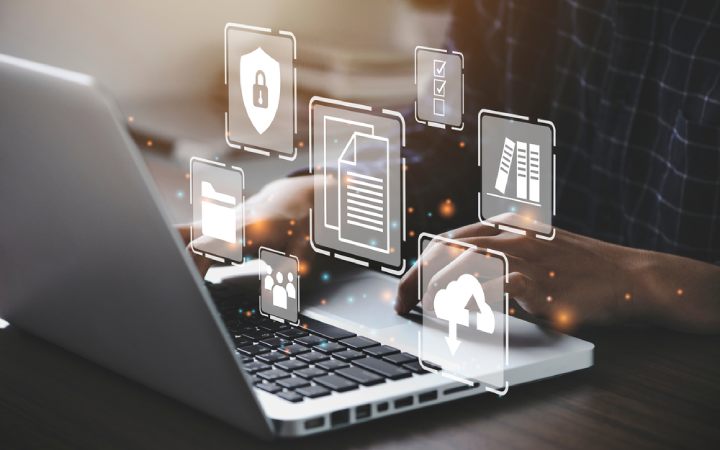
The history of computers starts in World War II, when physicist John Mauchly, engineer J. Presper Exkert Jr., and other colleagues of the University of Pennsylvania created the Electronic Numerical Integrator and Computer (ENIAC), which was the first general-purpose digital computer.
Arguably, computers are among the biggest and most relevant instruments in today’s world and, thanks to technological advances such as supercomputers, AI and machine learning they have gone through many changes and evolutions.

In summary, a computer is a machine which stores and processes different types of information. Usually, a computer works with a binary system, composed of the variables 0 and 1, which contribute to the calculation of algorithms and the completion of tasks. From smartphones to PCs, how do computers work?
How does a computer work?
Computers typically deal with data in binary form and follow instructions given to them by programs and other sources of inputs. Several key components are required for a computer, such as memory, which enables the device to store data and programs, and some input devices such as a keyboard and a mouse, which allows users to interact with it.
The output element, in particular, is important, since it does all the primary work inside the machine. It is controlled by a control centre, called the central processing unit (CPU), which is made of a complex and intricate wiring design which leads it to execute the instructions given to it. Every single computer, no matter the type, has a CPU. This component has to interact with the arithmetic/logic unit in order to act on a function.
When it comes to storage and memory, each computer has two kinds: primary and secondary. The former, also called main memory, is closely linked to the CPU, even if not directly part of it. The main memory, however, only holds data for the amount of time needed to complete a task. This is where secondary storage comes into play since it has a more permanent objective. Some types of secondary memory are CD-ROM disks or external hard disks.
What is the difference between hardware and software?
A computer includes both elements of hardware and software. To put it simply, hardware is the physical components of a computer, like the keyboard, while software is everything that happens inside, such as running programs such as Microsoft Office and Adobe Photoshop.
The main parts of a computer’s hardware are the keyboard, the mouse and the actual screen, as well as the monitor. The CPU is part of the hardware category as well, since it is made of electronic circuits. Hardware in a computer can be divided into four categories: input devices, output devices, storage and internal components.
Software, on the other hand, can be defined as a collection of instructions and tasks that run inside the computer. It is made of programming code written by a processor, and it is needed in order to make the computer functional. For instance, Microsoft Word, Excel and PowerPoint are all pieces of software, since they can be downloaded on every computer and be used to complete specific tasks.
What are the different kinds of computers?
There are multiple kinds of computers, the most common of which is the personal computer (PC). It is also called a microcomputer, and its functions are quite general and easy to grasp. Like other computers, it is formed by a microprocessor as the CPU, memory, input unit and output unit. This type of machine is mostly recommended for day-to-day activities such as working, watching movies, browsing the web and studying.
Other common kinds of computers are tablets and smartphones, which are easy to carry around. Between Apple and Samsung among other competitors, the choice is ample and functional. Each of these devices has extensive operating systems and, most importantly, multimedia capacities.
Other kinds of computers are: supercomputers, mainly used for scientific experimentations and complex mathematical equations; mainframe computers, perfect to run multiple programs at the same time, and used usually by institutions like banks and telecom sectors; minicomputers, usually used in accounting since they can process up to 200 users at a time; workstation computers, fit for technical and scientific applications; analogue computers, which are only dedicated to process analogue data, which changes continuously; digital computers, which can perform calculations and logical operations very quickly; and hybrid computers, which is a combination of analogue and digital computers.






